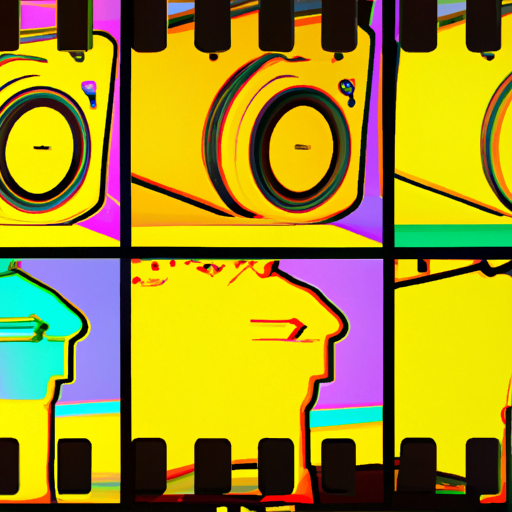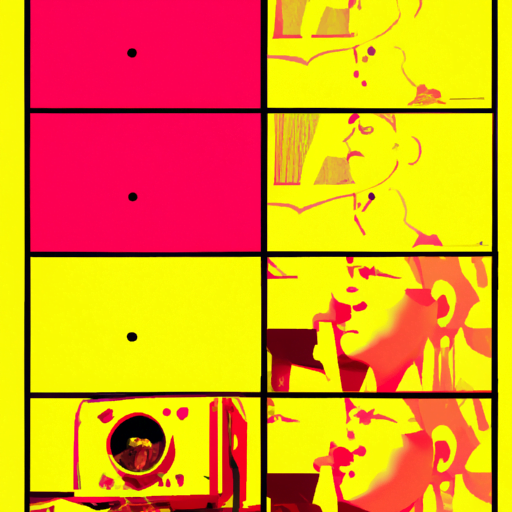
-
Table of Contents
Visual Feedback in Interface Design

When it comes to interface design, visual feedback plays a crucial role in enhancing user experience and improving usability. Visual feedback refers to the visual cues and responses provided by an interface to inform users about the outcome of their actions. It helps users understand the system’s state, provides confirmation of their interactions, and guides them through the interface. In this article, we will explore the importance of visual feedback in interface design and discuss its various aspects.
The Role of Visual Feedback
Visual feedback serves multiple purposes in interface design. It helps users:
- Understand the system’s response to their actions
- Confirm that their interactions have been registered
- Identify errors or issues in their inputs
- Navigate through the interface
By providing visual cues and responses, designers can create a more intuitive and user-friendly experience. Let’s delve deeper into the different aspects of visual feedback.
Types of Visual Feedback
Visual feedback can take various forms, depending on the context and the action performed by the user. Some common types of visual feedback include:
- Highlighting: When a user interacts with an element, such as clicking a button or hovering over a link, highlighting that element can provide immediate feedback and indicate that it is clickable or interactive.
- Animations: Animations can be used to provide feedback on actions that trigger a change in the interface. For example, when submitting a form, an animation can indicate that the form is being processed.
- Progress Indicators: Progress indicators are particularly useful when users need to wait for a task to complete. They inform users about the progress and reassure them that the system is working.
- Notifications: Notifications are visual cues that inform users about important events or updates. They can be used to provide feedback on completed actions, new messages, or system errors.
By utilizing these different types of visual feedback, designers can create a more engaging and informative interface.
Best Practices for Visual Feedback
While visual feedback is essential, it needs to be implemented thoughtfully to be effective. Here are some best practices to consider:
- Clarity: Visual feedback should be clear and easy to understand. Users should be able to quickly interpret the feedback and its meaning.
- Consistency: Consistency in visual feedback helps users develop mental models and expectations. Using consistent visual cues and responses throughout the interface improves usability.
- Timeliness: Visual feedback should be provided promptly to avoid leaving users in a state of uncertainty. Delayed or slow feedback can lead to frustration and confusion.
- Contextual Relevance: The visual feedback should be relevant to the action performed and the user’s current context. Irrelevant or misleading feedback can confuse users and hinder their progress.
- Accessibility: Visual feedback should be accessible to all users, including those with visual impairments. Alternative text, audio cues, or haptic feedback can be used to ensure inclusivity.
By following these best practices, designers can create interfaces that provide effective and user-friendly visual feedback.
Case Studies: Effective Visual Feedback
Let’s explore a couple of case studies that highlight the importance of visual feedback in interface design:
Case Study 1: Slack
Slack, a popular team communication platform, utilizes visual feedback to enhance user experience. When a user sends a message, the message bubble briefly animates to indicate that the message has been sent. This animation provides immediate feedback and reassures the user that their message has been successfully delivered.
Case Study 2: Google Maps
Google Maps incorporates visual feedback to guide users through the interface. When users search for a location, the map zooms in and centers on the searched location. This visual feedback helps users understand the system’s response to their search and provides confirmation of their input.
These case studies demonstrate how visual feedback can significantly improve user experience and usability.
The Impact of Visual Feedback on User Experience
Visual feedback has a direct impact on user experience. When implemented effectively, it can:
- Enhance usability by providing clear and intuitive cues
- Improve user satisfaction by confirming successful interactions
- Reduce errors and user frustration by highlighting issues or incorrect inputs
- Guide users through complex interfaces and processes
By considering the impact of visual feedback on user experience, designers can create interfaces that are more engaging and user-friendly.
Summary
Visual feedback plays a vital role in interface design, providing users with cues and responses that enhance their experience. By understanding the different types of visual feedback and following best practices, designers can create interfaces that are intuitive, informative, and engaging. Visual feedback improves usability, confirms successful interactions, reduces errors, and guides users through the interface. By incorporating visual feedback effectively, designers can create interfaces that leave a lasting positive impression on users.
